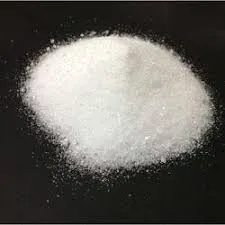Understanding HPMC An Overview of Methyl Cellulose
Hydroxypropyl Methylcellulose (HPMC) is a significant derivative of cellulose, widely utilized in various industries due to its unique properties. As a non-ionic cellulose ether, HPMC is created by modifying cellulose through the introduction of hydroxypropyl and methyl groups. This modification results in a compound that exhibits enhanced water solubility and thickening abilities, making it an essential ingredient in many applications, especially within food, pharmaceutical, and construction sectors.
Properties of HPMC
One of the most intriguing aspects of HPMC is its versatility. It is available in several grades, characterized by their distinct properties such as viscosity, gel strength, and solubility. HPMC can form clear, viscous solutions, which makes it an excellent thickening agent. Additionally, it has a high degree of thermal stability and can withstand a broad range of pH levels, ensuring its effectiveness across various formulations.
Moreover, HPMC is hygroscopic, meaning it can absorb moisture from the environment. This property makes it valuable as a moisture-retaining agent in food products, enhancing texture and shelf life. Also, HPMC is non-toxic and safe for consumption, which is critical in food and pharmaceutical applications.
Applications in Food Industry
In the food industry, HPMC is primarily used as a thickener, stabilizer, and emulsifier. It can improve the texture and mouthfeel of food products, thus enhancing consumer satisfaction. For instance, HPMC is often added to baked goods, sauces, and dairy products, helping to maintain consistency and prevent separation.
Additionally, HPMC is used in gluten-free formulations, as it can provide similar textural properties to gluten in baked products. This application is increasingly important as more consumers opt for gluten-free diets. The inclusion of HPMC not only improves the sensory characteristics of these products but also ensures better moisture retention, resulting in fresher and more palatable food items.
hpmc methyl cellulos

Role in Pharmaceuticals
The pharmaceutical industry also greatly benefits from HPMC’s properties. It serves as an important excipient in the formulation of tablets and capsules. HPMC is utilized for its ability to create controlled-release formulations, allowing for the gradual release of active ingredients over time. This characteristic is crucial for medications that require specific release profiles to enhance therapeutic effectiveness.
Furthermore, HPMC is involved in the production of eye drops and other liquid formulations due to its capacity to improve viscosity and provide lubrication, which is essential for patient comfort. Its safety profile also qualifies it for use in various healthcare applications, making it a trustworthy component in drug development.
Construction and Other Uses
Beyond food and pharmaceuticals, HPMC finds applications in building materials. It is commonly used in cement-based products as a water-retaining agent, helping to improve the workability and adhesion of mortars and plasters. The use of HPMC in construction contributes to the sustainability of building practices by enhancing material performance while reducing the need for certain chemicals.
Additionally, HPMC has been employed in cosmetics and personal care products for its emulsifying properties. It aids in the formulation of creams and lotions, enhancing their texture and stability.
Conclusion
In conclusion, Hydroxypropyl Methylcellulose (HPMC) is a versatile compound with extensive applications across various industries. Its unique properties, including water solubility, thickening, and emulsifying capabilities, make it indispensable in food, pharmaceuticals, construction, and cosmetic formulations. As market demand for natural and safe ingredients increases, HPMC is likely to play an even more significant role in future innovations and applications, solidifying its position as a vital component in many commercial products.
-
Rdp that The Revolutionary Polymer Powder Transforming Modern Construction MaterialsNewsAug.11,2025
-
Hpmc Powder that Versatile Additive for Detergents and Personal CareNewsAug.11,2025
-
Hpmc Hydroxypropyl Methylcellulose that Essential Building Material Additive from Shijiazhuang Gaocheng YongfengNewsAug.11,2025
-
Hydroxypropyl Methyl Cellulos Hpmc that Essential for Construction ApplicationsNewsAug.11,2025
-
Mhec Powder that Revolutionizing Construction Chemistry with Cellulose Ether SolutionsNewsAug.11,2025
-
Industri Hpmc that The Global Backbone of Advanced ConstructionNewsAug.11,2025




